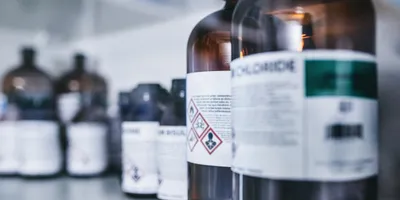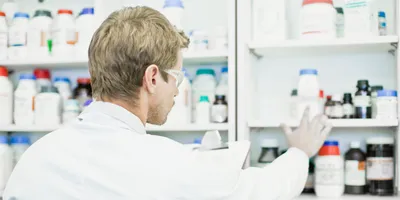Effective biosafety cabinet practices are essential for protecting lab personnel and the surrounding community from the biohazards commonly handled in laboratories. Biosafety cabinets create a controlled airflow environment, effectively containing samples and minimizing exposure to harmful agents.
In conjunction with lab equipment like biosafety cabinets, personnel also play a crucial role in safety. Lab managers have a responsibility to create a culture of safety while ensuring their labs operate at maximum efficiency and protect against the harmful contaminants they are working with.
To achieve this, lab managers must prioritize proper staff training and understanding of the best practices for operating a biosafety cabinet. It’s important that every team member be knowledgeable about how biosafety cabinets work and the importance of third-party certification to NSF/ANSI 49: Biosafety Cabinets Design and Performance (NSF/ANSI 49). By keeping both equipment and staff operating at peak performance, lab managers help maintain a safe work environment and contain hazardous materials.
Staff training for BSC use
Laboratory supervisors must actively promote and monitor safety practices among personnel using biosafety cabinets. Labs will operate more safely through proper training and understanding of how they function. Specifically, personnel should be knowledgeable about the different categories of biosafety cabinet equipment, including Class II Type A1, A2, and C1 as well as Class II Type B1 and B2 equipment. These are categorized based on the level of protection they provide.
Lab managers should note that all Class II biosafety cabinets protect workers by providing inward directional airflow through the front opening (work access opening) of the biosafety cabinet. The air that enters the Class II Type A1, A2, and C1 biosafety cabinets exits the system through an exhaust HEPA filter, either back into the laboratory or through a canopy connected to an exhaust system. Class II Type B1 and B2 biosafety cabinets need a direct connection to an exhaust system to pull the air out of the exhaust HEPA filter and discharge the filtered air outside of the building. The HEPA filtered exhaust air protects the lab or outside environment from contamination.
Class II Type A1, A2, C1 and B1 biosafety cabinets are considered partially recirculating systems. Air from the work area is pulled under the work surface and is passed through a HEPA filter prior to returning to the work area in the form of downflow air. In the case of the Class II Type B1 biosafety cabinets, some of the air from the work area is pulled into a slot across the back wall (usually a single slot at the bottom of the work area), which leaves the biosafety cabinet through the exhaust HEPA filter and exits the building. Class II Type B2 biosafety cabinets are considered single-pass air systems, do not recirculate downflow air (supply air for downflow comes from the room), and all the air that enters the biosafety cabinet is exhausted.
Safe biosafety cabinet operations
Biosafety cabinets are essential pieces of equipment for lab personnel to conduct the testing and experiments needed to move our healthcare knowledge and solutions forward. Considering their use with harmful pathogens and bacteria, lab managers must understand the safest way to work with a biosafety cabinet and enforce safe practices, including:
- Ventilation systems: Personnel need to be aware of any drafts that may come from ventilation systems, as they may interfere with containment and product protections afforded by the biosafety cabinet.
- Slow movement: Lab workers must not walk rapidly past individuals working in a Class II cabinet, as they may interfere with the biosafety cabinet’s containment protection, creating the potential to accidentally bump into the user and cause an accident with the hazardous materials they are working with.
- Personal protective equipment: Biosafety cabinet workers should ensure they wear gloves when working in a Class II cabinet to protect themselves and others from the sample materials.
- Proper sanitation: To reduce the risk of cross-contamination and laboratory leaks, the work surface must be thoroughly disinfected before and after each use.
When working in a biosafety cabinet, it is also important that all hand movements into or out of the biosafety cabinet through the front opening are done at a slow and deliberate pace to not affect the containment airflow barrier. Movements side to side within the biosafety cabinet must be deliberate as well. The processes occurring within the biosafety cabinet should be set up to work from clean to dirty by staging supplies on one side, performing the process in the center, and placing the used and dirty objects on the other side. All biohazard waste should be placed into a biohazard bag prior to leaving the biosafety cabinet, the outside of the bag surface disinfected, the bag then removed and placed into a hazardous waste holding area or autoclaved prior to disposal.
Lab Safety Management Certificate
The Lab Safety Management certificate is more than training—it’s a professional advantage.
Gain critical skills and IACET-approved CEUs that make a measurable difference.
Third-party certification process
A thorough understanding of how biosafety cabinets are certified, how they function, and how to use them is crucial for lab managers. Lab safety is integral, and utilizing an NSF-listed biosafety cabinet, as well as the services of an NSF-accredited Class II biosafety cabinet field certifier can help. Lab personnel with key responsibilities in managing the testing, calibration, maintenance, and repairs of the lab’s equipment inventory should become familiar with the NSF/ANSI 49 biosafety cabinet certification process. The product certification includes a challenge test under out-of-balance conditions and an annual manufacturing facility audit.
The lab manager responsible for their audit should monitor the NSF/ANSI 49 certification process to ensure that the certifier provides the correct service and a quality certification. Depending on the size of the biosafety cabinet, the certification process usually takes 30-45 minutes from the beginning of testing to completion. If adjustments or repairs are needed, it may take longer. Lab managers should also understand the report provided by the biosafety cabinet field certifier so they can understand where they are succeeding and where there may be improvements needed.
Ensuring the safety of your laboratory environment hinges on a comprehensive understanding of biosafety cabinets, which are vital for containing hazardous materials. Proper staff training is essential, as it equips personnel with the knowledge to operate these cabinets effectively and adhere to best practices. By fostering a culture of safety and awareness, organizations can significantly mitigate risks. Moreover, seeking third-party certification to NSF/ANSI 49 not only verifies the performance of your biosafety cabinets but also reinforces your commitment to maintaining a secure workspace. Together, these elements create a robust framework for safeguarding both personnel and materials. Let’s prioritize biosafety by investing in training and certification, ensuring operations remain safe and compliant.











